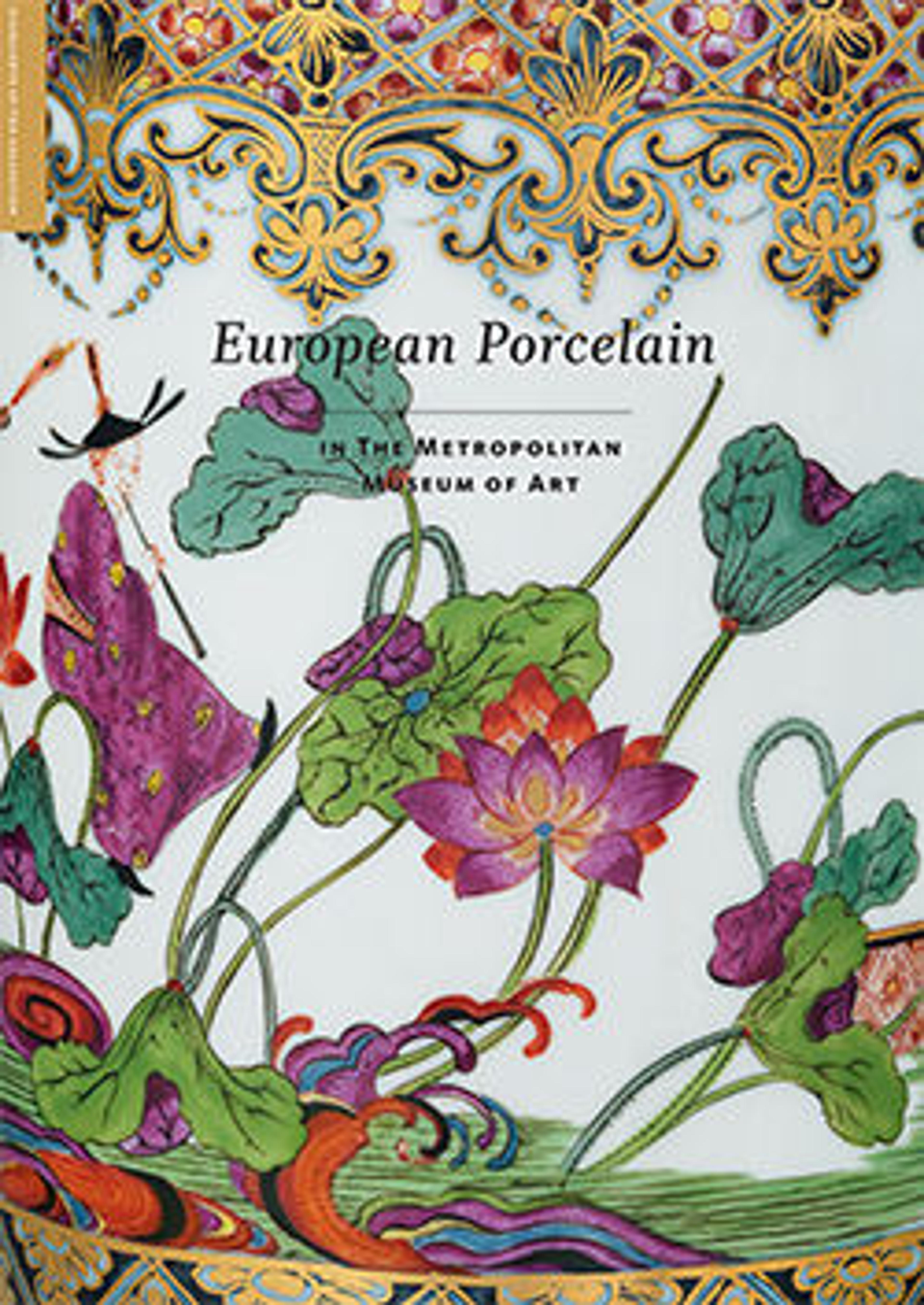Jar
A soft-paste porcelain factory was established in about 1730 by the duc de Bourbon on the grounds of his château at Chantilly. The duc was a passionate collector of Asian ceramics, particularly porcelain from Japan. It is clear that the production of Japanese-style porcelains was made a priority at Chantilly; even the patent granted to the factory by Louis XV in 1735 specifically describes the right to make porcelain "in imitation of the porcelain of Japan."
This jar, one of the largest and most ambitious pieces made at Chantilly, copies a Japanese form, and the decoration is self-consciously Japanese in inspiration. The jar's painted scenes are derived from the prints of a designer named Jean Antoine Fraisse (French, active ca. 1680–1739), who was employed by the duc. Numerous motifs found throughout his Book of Chinese Designs, published in 1735, were copied by the factory's painters.
The Chantilly factory commonly used a tin glaze for its porcelain. The addition of tin to the lead-based glaze created an opaque, milky white surface that masked the slightly yellow cast of Chantilly's soft-paste porcelain body.
This jar, one of the largest and most ambitious pieces made at Chantilly, copies a Japanese form, and the decoration is self-consciously Japanese in inspiration. The jar's painted scenes are derived from the prints of a designer named Jean Antoine Fraisse (French, active ca. 1680–1739), who was employed by the duc. Numerous motifs found throughout his Book of Chinese Designs, published in 1735, were copied by the factory's painters.
The Chantilly factory commonly used a tin glaze for its porcelain. The addition of tin to the lead-based glaze created an opaque, milky white surface that masked the slightly yellow cast of Chantilly's soft-paste porcelain body.
Artwork Details
- Title:Jar
- Manufactory:Chantilly (French)
- Artist:After a print by Jean Antoine Fraisse (French, active ca. 1680–1739)
- Date:ca. 1735–40
- Culture:French, Chantilly
- Medium:Tin-glazed soft-paste porcelain decorated in polychrome enamels
- Dimensions:Height: 11 in. (27.9 cm)
- Classification:Ceramics-Porcelain
- Credit Line:Gift of R. Thornton Wilson, in memory of Florence Ellsworth Wilson, 1950
- Object Number:50.211.121
- Curatorial Department: European Sculpture and Decorative Arts
More Artwork
Research Resources
The Met provides unparalleled resources for research and welcomes an international community of students and scholars. The Met's Open Access API is where creators and researchers can connect to the The Met collection. Open Access data and public domain images are available for unrestricted commercial and noncommercial use without permission or fee.
To request images under copyright and other restrictions, please use this Image Request form.
Feedback
We continue to research and examine historical and cultural context for objects in The Met collection. If you have comments or questions about this object record, please contact us using the form below. The Museum looks forward to receiving your comments.
